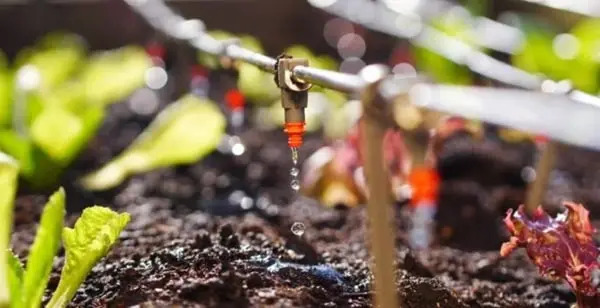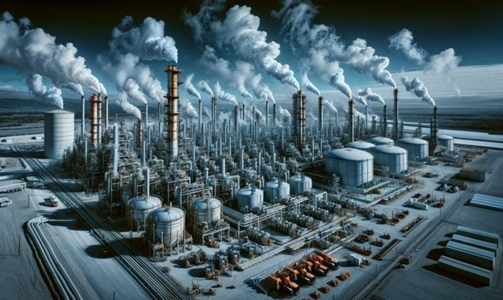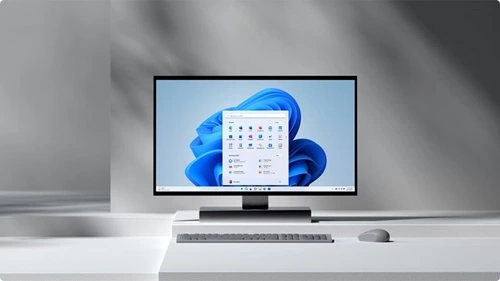If you have ever known about the outdated sprinkler, which drenched the leaves of the plants and the lawn with wasteful spraying, then you don’t want that by any means. The essence of the drip irrigation system is to give water to the plants only where it is supposed to be distributed, but how?
Because the system drops water slowly (at a controlled rate) rather than soaking a large area, there is less evaporation and runoff. To put it simply, the plants get the water, nothing more or less, which leads to healthier blooms and less waste. A typical drip irrigation system consists of several parts, a pump to supply the water, control valves to regulate the flow, filters to clean water, and a tubing network with drippers that drip water at regular time intervals. Sounds great, right? Well, now let’s get to the benefits and downsides of this water system.

Advantages of Drip Irrigation
1. Save Tons of Water
You see, drip irrigation systems inject water specifically into a plant’s roots, saving huge amounts of water through evaporation and runoff. Drip is a huge improvement on the surface irrigation found in many older farms, which waters large areas, losing massive amounts of water to the air and to surface runoff. All in all, drip just dribbles a little bit of water very efficiently straight into the soil. Oh, and if you happen to be farming in an area that can’t spare a drop, drip irrigation is your best hope of survival.
2. Save Money in the Long Run
Sure, an initial investment might be needed (installing a drip irrigation system takes time and money), but the overall savings are immense in the long term. With automated systems featuring timers and sensors, you barely need any human intervention, which means lower labor expenses. All in all, less water equals lower water bills.
3. No More Soil Erosion
In addition to saving water and reducing costs, another key advantage of drip irrigation is its ability to prevent soil erosion. How? Well, in conventional systems using water flooding or spraying, the water usually washes away the soil. Drip irrigation, on the other hand, which gently deposits water to the soil surface or below the surface at low pressure, prevents the soil from being blown away and keeps the soil structure intact, thus reducing nutrient leaching and maintaining the soil health and fertility.
4. Boost Plant Growth and Yields
Since the irrigation water is directly delivered to the roots of plants while preventing any evaporation, that means plants would receive the same amount of water at the proper time. Moreover, irrigation water can be readily absorbed, improving the nutrition absorption of plants, and developing healthy and stronger stems and leaves, resulting in growing better and more favorable production.
5. Fits Any Garden or Farm
And yes, drip irrigation systems are also infinitely adaptable to different landscapes and plant types, accommodating any plant. They can be configured to fit your layout, whether you have a tiny garden, a vast farm, or uneven terrain, drip irrigation can be customized to meet your specific needs.
6. Maximize Fertilizer Use
In addition to water, drip irrigation can deliver fertilizers and other nutrients to plants directly via the water, which is a process known as fertigation. Fertigation reduces fertilizer and nutrient loss from leaching and runoff, delivering only what plants need to the exact place they need it most, their root zones, you know? All in all, this efficient use of fertilizers also means more savings for farmers.
Disadvantages of Drip Irrigation
1. High Initial Costs
See, setting up a drip irrigation system involves a higher initial investment than other options. To do it right, you’ll need to purchase and install pipes, emitters, timers, and sensors, and often hire a professional to do it. In the long term, all that upfront cost can easily build up, but for small farmers out there or those with little capital, it can be a deal-breaker.
2. Clogging Issues
Because the openings are pretty small, you might well find that your drip irrigation emitters get clogged. Particles in the water, stuff such as minerals and ions, organic matter such as algae and decaying leaf fragments, or even insects and larvae, can soon block the system, and you will have to filter the water and flush the system from time to time to keep it working properly. This very system, then, can be a bit of trouble, and requires additional equipment.
3. Regular Maintenance Needed
As with any system like this, regular maintenance will be required to keep it operating optimally like emitters and mechanical parts will have to be checked for blockages, and filters and pipes will no doubt sustain damage over time, which must be repaired or replaced. For many users, real-time monitoring, sensor configuration, and fine-tuning will be labor-intensive tasks requiring the use of technical know-how.
4. Soil Salinity Problems
Another pretty big downside of drip irrigation is that water is applied as a relatively uniform column and does not spread out very much. This can lead to an accumulation of waterborne salts in the root zone if you aren’t careful. The salts do not leach very well when you apply water directly to the root zone, whereas under more open sprinkler irrigation the salts can be leached out more easily.
5. Vulnerability to External Damage
Drip irrigation systems are susceptible to physical damage like a lawnmower or a shovel could inadvertently slice the tubing, a rodent or other animal could literally chew on it; and, when exposed to sunlight, the skin of the drip tube can slowly degrade with time. This might not sound like a big issue at first, but once you start to deal with the issue again and again, it’ll become frustrating.
6. Requires Technical Skills
And yes, a drip irrigation system requires skill and effort to both setup and maintain. You have to get to grips with things such as putting it together, changing flow rates, and regularly filtering frequent blockages. If you haven’t handled irrigation equipment before, you will find it difficult to figure out, well at first at least, you know? It can be a slow process and needs some training to get it right. Get it wrong, and the entire system malfunctions.
Quick Comparison Between Advantages and Disadvantages of Drip Irrigation
|
Advantages |
Disadvantages |
| Significant water conservation | High initial investment |
| Long-term cost savings | Prone to clogging |
| Prevents soil erosion | Requires regular maintenance |
| Enhances plant growth and yields | Soil salinity issues |
| Versatile for different landscapes | Susceptible to physical damage |
| Efficient fertilizer usage | Susceptible to physical damage |



